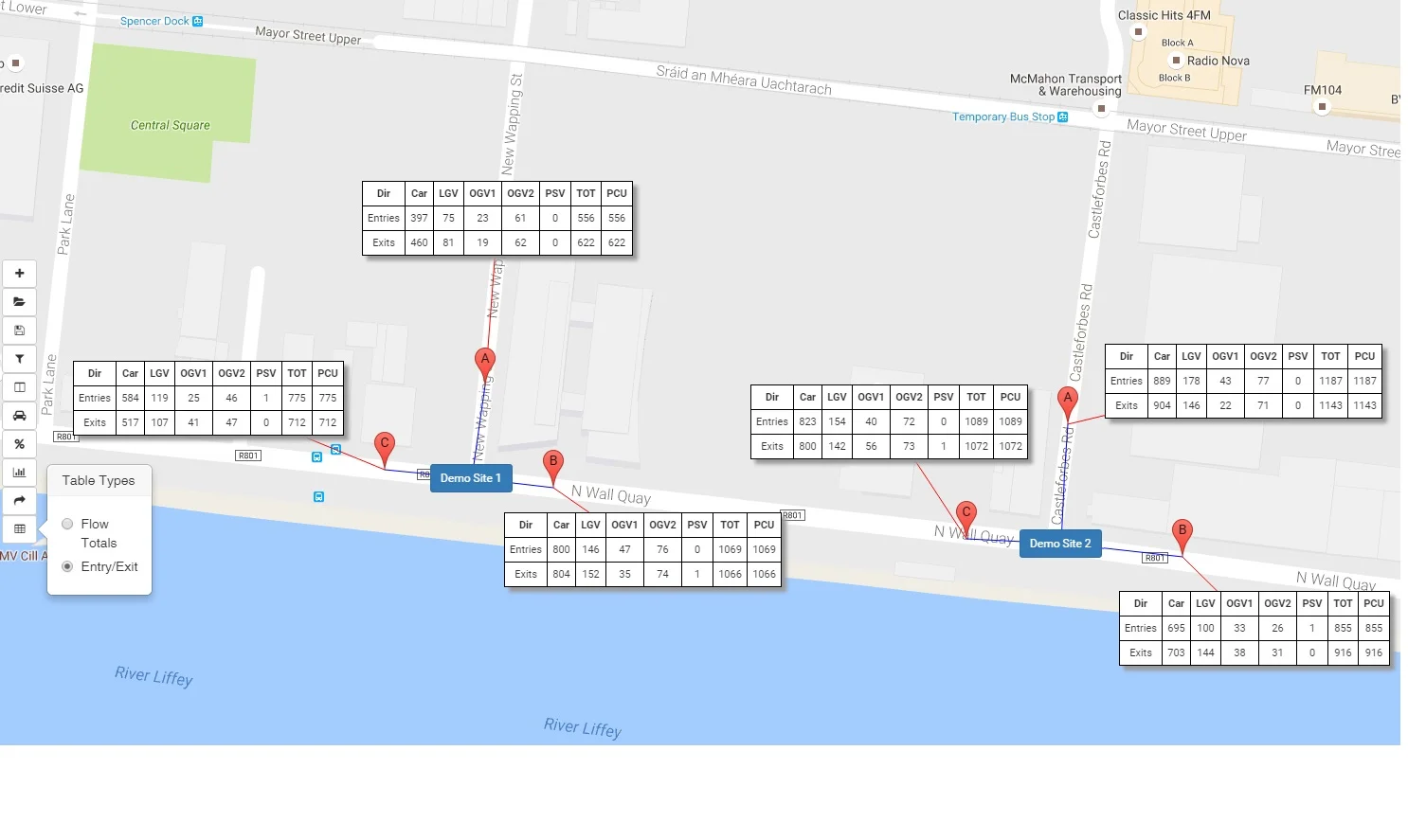After the successful launch of Global Team and Idaso has now further developed the application to cater to the needs of consulting engineers. We spoke to over twenty engineers on the topic of traffic data collection and the pain points they experience. This feedback has formed the roadmap for Global Team Plus (GTP) which is now in beta testing with a closed group of customers. Global Team Plus Video
I’d love to tell you about some of the feedback we received and how we have used it in the development of GTP.
A great example of how user feedback has helped inform the development of GTP is in the Store and Share Function. One issue that was raised time and time again was the storing of data in a way that made it accessible for all stakeholders. Our solution was to build a database linked to a google earth map marking the location of sites with a link to the related data. This can then be shared via a link with external stakeholders or shared directly with other GTP users.
Then of course data quality was an issue of concern for most people. In a process such as traffic data collection which has traditionally been a highly labour intensive process with many opportunities for error it is very easy for a simple mistake to go unseen. To help in identifying errors in data early GTP uses the mvt. output file from SmarterCounting a computer aided manual counting software that enables the user to use a games controller to count and classify traffic. The advantage of this is that it date time stamps each individual event which when inputted to the Survey Manager in GTP enables the user to view data distribution charts as well as compare flows between junctions by customisable time intervals. The SmarterCounting software has its own inbuilt verification process where it directly compares sample recounts by the exact time period, but these additional GTP features add an additional layer of data verification.
Unfortunately the traffic data collection industry does not have a set format for data format outputs. This leaves engineers having to often reformat data before inputting into their traffic models. A common issue that was observed was that different models require a different a letter convention to be used to mark turning count flows, i.e. a letter ascribed to each arm of a junction. GTP “Swap origins” function allows the user to reformat their data with the click of two buttons rather than renaming individual flows in excel.
There was of course a plethora of other points raised that we’ve addressed and are continuing to address in the software. I look forward to telling you more about these in the future.
Thank you to all involved in informing the development process, and thank you for taking the time to read this short blog.
Kind regards
Ian


